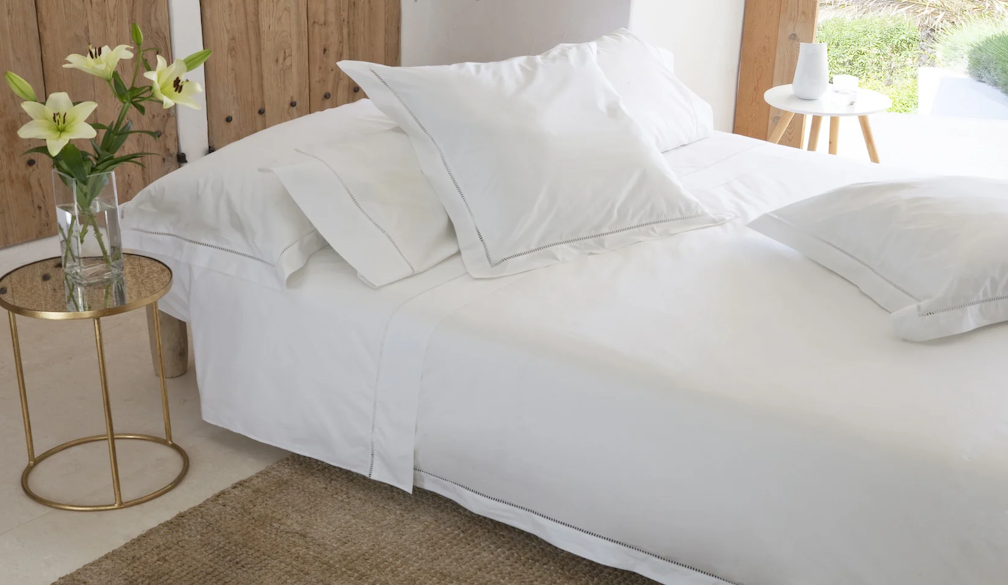Cotton Bed Linens: Your Best Choice for Comfort and Durability

In the realm of sleep, comfort is king. This is where cotton bed linens shine as a beacon of relaxation and durability. Whether you're renovating your bedroom or simply updating your bedding, cotton stands out as a prime choice for fabric. Its blend of comfort, ease of maintenance, and hypoallergenic nature make it an unbeatable option for almost any household. This article aims to unravel the myriad benefits of cotton bed linens, guiding you through their inherent qualities and how they compare with other materials in the market.
What are Cotton Bed Linens?
Cotton bed linens are textiles made from the cotton plant. Known for its versatility, cotton can be woven into fine, luxurious sheets or a denser, more robust fabric. This adaptability makes it perfect for a diverse range of bed linens, including everything from pillowcases and sheets to duvets and comforters. The process of turning raw cotton into a soft fabric involves several stages, including spinning, weaving, and finishing, which can influence the texture and final quality of the bed linens.
Benefits of Cotton Bed Linens
Comfort Factor
Cotton bed linens are synonymous with comfort. The natural fibres provide a soft texture that increases the comfort level of your bedding. Unlike synthetic materials, cotton has the ability to wick away moisture, helping regulate body temperature during sleep. This makes cotton linens ideal for use in any season, providing warmth in the winter and a cool feel during the summer months. Additionally, with each wash, cotton fibres tend to become softer, enhancing the comfort with time.
Durability and Longevity
When it comes to longevity and durability, cotton bed linens stand the test of time. Known for its strength, the cotton fabric resists wear and tear much better than its synthetic counterparts. Good quality cotton sheets can last for years if cared for properly. This resilience makes cotton an economically viable choice in the long run, as the need for frequent replacements is greatly reduced. Investing in premium cotton bed linens, like those available from DEIA Living, means enjoying a lasting product that maintains its look and feel over many wash cycles.
Hypoallergenic Properties
For allergy sufferers, cotton bed linens are a breath of fresh air. Cotton's hypoallergenic properties make it unlikely to cause any allergic reactions, thereby promoting healthier sleep environments. This is particularly important for those with sensitive skin or respiratory issues, as cotton does not trap dust or pollen as synthetic fabrics can. The ability to wash cotton bed linens at high temperatures also means you can easily remove allergens, ensuring a clean and hygienic sleep surface night after night.
Easy to Clean and Maintain
One of the most practical benefits of cotton bed linens is their ease of care. Cotton fabric is machine washable and can endure high temperatures without deteriorating. This means it can be cleaned more thoroughly and frequently, which is vital for maintaining a fresh and hygienic bed. Moreover, cotton does not retain odours, which is a common issue with some synthetic fibres, ensuring your bedding stays fresher longer.
Comparison of Cotton Bed Linens with Other Materials
When compared to materials like polyester or silk, cotton offers a unique blend of benefits. Polyester, for example, while durable, does not offer the same breathability as cotton and can lead to discomfort during warmer nights. Silk, while luxurious, requires delicate handling and often comes with a higher price tag. Cotton strikes a balance between comfort, durability, easy care, and cost-effectiveness, making it a more suitable all-round choice for everyday use in households.
How to Choose the Right Cotton Bed Linen
Selecting the right cotton bed linen involves considering several factors, including the weave, thread count, and finish. A higher thread count often signifies a finer weave and a softer fabric, but it is not the sole indicator of quality. The type of weave, such as percale or sateen, affects the feel and the warmth of the fabric. Deciding between them depends on your personal preference for a crisp or a silky sheet. Always check the care label to ensure you are purchasing 100% cotton linens, as some may be blended with synthetic fibres, altering the feel and properties of the linens.
Conclusion
Cotton bed linens are more than just a practical choice; they are an investment in your comfort and health. With their unparalleled blend of comfort, durability, and hypoallergenic properties, alongside easy maintenance, cotton linens consistently stand out as the superior choice in bedding. Whether you decide to opt for the crispness of percale or the smoothness of sateen, cotton ensures a great night's sleep.














